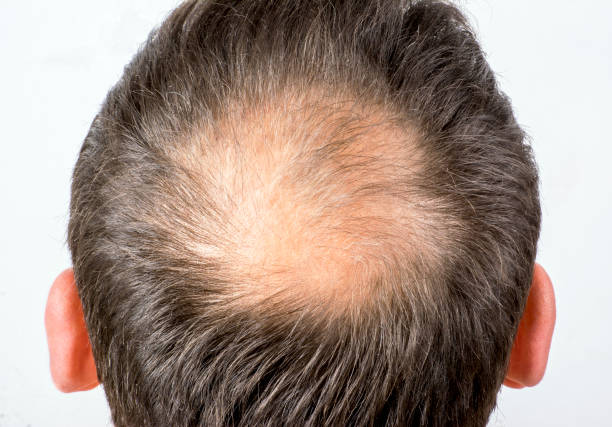Hair loss can significantly impact self-esteem and confidence, prompting many individuals to seek effective solutions. Among the various options available, hair transplants have gained popularity for their potential to restore natural hair growth. Specifically, Crown Hair Transplant in Dubai has become a sought-after procedure for those experiencing hair thinning at the crown area. This article aims to provide comprehensive insights into whether a crown hair transplant offers a permanent fix for hair loss, exploring the procedure, its longevity, and what patients can expect.
Understanding Hair Loss at the Crown Area
The Anatomy of the Crown Region
The crown, also known as the vertex, is the upper back part of the scalp. It is a common area for hair thinning and baldness, especially in androgenetic alopecia, the most prevalent form of hair loss. The hair in this region tends to thin gradually, often leading to a receding hairline and bald patches if left untreated.
Causes of Hair Loss in the Crown
Hair loss at the crown can stem from genetic predisposition, hormonal changes, or aging. These factors contribute to follicular miniaturization, where hair follicles shrink over time, producing finer and shorter hairs until they cease to produce visible hair altogether. Understanding the root cause is essential for choosing the appropriate treatment approach.
What Is a Crown Hair Transplant?
The Procedure Overview
A crown hair transplant involves relocating healthy hair follicles from a donor area—typically the back or sides of the scalp—to the bald or thinning crown region. This targeted procedure aims to restore natural hair growth that blends seamlessly with existing hair, providing a permanent aesthetic solution.
Types of Hair Transplant Techniques Used
Two primary techniques are common in crown transplants:
- FUT (Follicular Unit Transplantation): Involves removing a strip of scalp tissue, dissecting it into individual follicular units, and transplanting them to the crown.
- FUE (Follicular Unit Extraction): Extracts individual hair follicles directly from the donor area using a punch tool, minimizing scarring and enabling a more natural look.
Both techniques have their advantages, and the choice depends on individual needs, scalp condition, and surgeon expertise.
Is a Crown Hair Transplant a Permanent Solution?
The Longevity of Transplanted Hair
One of the most significant advantages of hair transplants is their potential for permanence. Transplanted hair follicles are typically resistant to the hormones responsible for hair loss, especially when derived from the donor area. Once transplanted, these follicles tend to continue producing hair naturally for a lifetime, making the procedure a long-term solution.
Why Transplants Are Considered Permanent
The permanence of a crown hair transplant hinges on the health of the transplanted follicles and the underlying cause of hair loss. Since the donor follicles are genetically resistant to balding, they usually retain their characteristics after transplantation. This means that, under proper care and maintenance, the results can be enduring.
Factors Influencing Long-Term Success
While hair transplants are generally permanent, certain factors can influence their longevity:
- Progression of Hair Loss: If pattern baldness continues beyond the transplanted area, additional procedures might be necessary.
- Proper Post-Operative Care: Following medical advice and maintaining scalp health aid in the longevity of results.
- Overall Hair Health: Lifestyle factors such as diet, stress management, and hair care routines play a vital role.
Addressing Common Concerns about Permanence
Some individuals worry whether the transplanted hair might fall out over time. Rest assured, once the transplanted follicles establish themselves and grow, they typically remain permanent. However, natural thinning might still occur in untreated areas, emphasizing the importance of a comprehensive approach to hair health.
The Process of a Crown Hair Transplant
Consultation and Planning
A thorough consultation helps determine candidacy, assess scalp condition, and plan the optimal placement of grafts for natural aesthetics. The surgeon considers hair density, hairline design, and future hair loss patterns.
Donor Area Preparation
Healthy hair follicles are carefully harvested from the donor area. The selection of follicles aims to ensure durability and natural growth post-transplant.
Graft Placement and Surgery
The grafts are meticulously placed in the crown area, with attention to angle, direction, and density to mimic natural hair growth. The procedure typically spans several hours, depending on the extent of coverage.
Recovery and Results
Post-operative care involves scalp protection, minimizing swelling, and following hygiene protocols. Visible results start to emerge within a few months, with full maturation of transplanted hair usually evident after 9-12 months.
Post-Transplant Care and Maintenance
Ensuring Longevity of Results
Proper scalp hygiene, avoiding excessive sun exposure, and following surgeon instructions are crucial. Use of recommended hair care products and medications can support healthy growth.
Managing Future Hair Loss
In some cases, a combination of treatments such as medications or lifestyle modifications may be advised to prevent further hair loss and preserve transplanted hair.
Advantages of Choosing a Crown Hair Transplant
Natural and Permanent Results
Transplanted hair grows like natural hair and, with proper care, remains permanent, providing a long-lasting solution to crown baldness.
Minimally Invasive Procedure
Modern techniques like FUE reduce scarring and downtime, making it a convenient option for many individuals.
Improved Confidence and Appearance
Restoring hair in the crown enhances overall appearance, boosting confidence and self-esteem.
Common Myths About Hair Transplants
Hair Transplants Are Not Reversible
While the transplanted hair is permanent, some misconceptions suggest otherwise. The procedure is generally considered a permanent fix, especially when performed correctly.
Transplants Guarantee Complete Restoration
While highly effective, hair transplants may not guarantee complete regrowth in all cases. Results depend on individual factors and proper aftercare.
Future Hair Loss Cannot Be Managed
Proactive measures and ongoing treatments can effectively manage hair loss progression, complementing the results of a crown hair transplant.
Final Thoughts
A crown hair transplant can offer a permanent solution for hair loss at the crown, restoring natural hair and enhancing appearance. It is essential to consult with experienced specialists to evaluate individual needs and develop a personalized treatment plan. When performed correctly, a Crown Hair Transplant Dubai or elsewhere provides long-lasting, natural-looking results that can significantly improve quality of life.






0 Comments